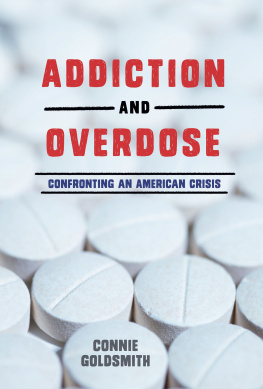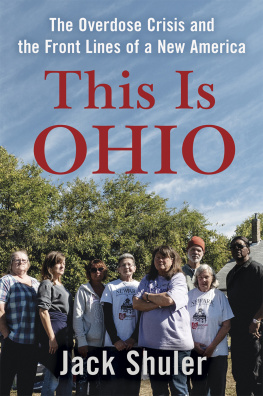Thank you for downloading this Simon & Schuster ebook.
Get a FREE ebook when you join our mailing list. Plus, get updates on new releases, deals, recommended reads, and more from Simon & Schuster. Click below to sign up and see terms and conditions.
CLICK HERE TO SIGN UP
Already a subscriber? Provide your email again so we can register this ebook and send you more of what you like to read. You will continue to receive exclusive offers in your inbox.
We hope you enjoyed reading this Simon & Schuster ebook.
Get a FREE ebook when you join our mailing list. Plus, get updates on new releases, deals, recommended reads, and more from Simon & Schuster. Click below to sign up and see terms and conditions.
CLICK HERE TO SIGN UP
Already a subscriber? Provide your email again so we can register this ebook and send you more of what you like to read. You will continue to receive exclusive offers in your inbox.

Scribner
An Imprint of Simon & Schuster, Inc.
1230 Avenue of the Americas
New York, NY 10020
www.SimonandSchuster.com
Copyright 2018 by Dr. Lloyd I. Sederer
The Art of Healing, copyright 1969 by W. H. Auden; from W. H. AUDEN COLLECTED POEMS by W. H. Auden. Used by permission of Random House, an imprint and division of Penguin Random House LLC. All rights reserved.
Brief quote on p. of THE DOORS OF PERCEPTION by Aldous Huxley. Copyright 1954 by Aldous Huxley. Copyright renewed 1982 by Lauren Huxley. Reprinted by permission of HarperCollins Publishers.
All rights reserved, including the right to reproduce this book or portions thereof in any form whatsoever. For information, address Scribner Subsidiary Rights Department, 1230 Avenue of the Americas, New York, NY 10020.
First Scribner hardcover edition May 2018
SCRIBNER and design are registered trademarks of The Gale Group, Inc., used under license by Simon & Schuster, Inc., the publisher of this work.
For information about special discounts for bulk purchases, please contact Simon & Schuster Special Sales at 1-866-506-1949 or .
The Simon & Schuster Speakers Bureau can bring authors to your live event. For more information or to book an event, contact the Simon & Schuster Speakers Bureau at 1-866-248-3049 or visit our website at www.simonspeakers.com.
Interior design by Jill Putorti
Jacket design by Jarrod Taylor
Jacket photograph by Paul Taylor / Getty Images
Library of Congress Cataloging-in-Publication Data
Names: Sederer, Lloyd I., author.
Title: The addiction solution : treating our dependence on opioids and other drugs / by Lloyd I. Sederer, MD.
Description: First Scribner hardcover edition. | New York : Scribner, 2018. |
Includes bibliographical references and index.
Identifiers: LCCN 2017061754| ISBN 9781501179440 (hc) | ISBN 9781501179457 (tp) | ISBN 9781501179464 (ebook)
Subjects: LCSH: Drug abuseTreatmentPopular works. | Substance abuseTreatmentPopular works. | Opioid abuseTreatmentPopular works.
Classification: LCC RC564.29 .S43 2018 | DDC 362.29dc23
LC record available at https://lccn.loc.gov/2017061754
ISBN 978-1-5011-7944-0
ISBN 978-1-5011-7946-4 (ebook)
Photograph and diagram credits: p. , joshya/Shutterstock.com
To all those doing the hard work of making recovery possibleindividuals, families, friends, clinicians, and policy makers
CONTENTS
AUTHORS NOTE
In 1955, the great director Otto Preminger released a timeless film about addiction. The Man with the Golden Arm took us into the life of a card dealer and aspiring drummer hooked on heroin and trying to get clean. This three-time Oscar-nominated film starred Frank Sinatra, Kim Novak, and other well-known period actors; the score, by Elmer Bernstein, was a concert unto itself.
With cinema verit, truth in film, Preminger boldly conveys the dark days of a man released from prison and determined not to go back to injecting his golden arm with his most powerful source of comfort. First he fails, drawn to old haunts and toxic characters, and subject to disappointments and his own deeply ingrained habits. Then, with the help of a woman, he struggles to put the demon drug, the monkey on this back, once again behind him.
The Man with the Golden Arm is as current today as it was over sixty years ago. We witness, through this film, the power of a substancein this instance a natural opioid, herointo pirate away a life, the waste in using the correctional system as a solution, the hard work of recovery, and the inestimable value of love and support in rebuilding a life.
America is a country with a golden arm.
The regular uses of psychoactive drugs have reached their highest levels ever in the United States over this past decade. The use and abuse of drugs, drugs that act on our cerebral nerve cells and neural circuits, our brains and our minds, extends from the legal to the illegal purchase and distribution of substances. The biggest culprits include prescription opioid pain pills; natural and synthetic opioids such as heroin, morphine, and now fentanyl; stimulants, including Adderall, Ritalin, cocaine, and crystal meth; marijuana and its toxic synthetic relatives such as K2 or spice; ecstasy; ketamine; and many others. To avoid a boundless scope of discussion, I will mostly confine my discussion to illegal drugs and the abuse of legal drugs, particularly opioid pain pills, even though tobacco and alcohol are among the most deadly of all intoxicants.
The evidence for the escalating dominance of opioids is in their sales figures and the deaths they have induced.
Sales of prescription opioids in the United States were four times greater in 2010 than they were in 1999, and overdose deaths in 2008 were four times their rate twenty years earlier. The greatest increases in recent years have been first in the American Midwest, then in the Northeast and South, and especially among non-Hispanic whites and among those twenty-six years of age and older. Drug overdose deaths today exceed motor vehicle accidents and gunshot wounds as preventable causes of mortality, with 52,404 lethal drug overdoses identified in 2015and this is likely an underestimate. Over 60 percent of these avoidable deaths are related to prescription pain pills and their common progression of use, abuse, and dependency, namely snorting or shooting up available, cheaper, and more potent heroin and lately the more deadly synthetic opioid fentanyl. (Overdose deaths from this and related opioids tripled from 3,105 in 2013 to 9,580 in 2015, also likely underestimates.)
The Centers for Disease Control (CDC) has declared opioids an epidemic, as it has with more familiar epidemics such as tuberculosis, flu, and Ebola. Epidemics mean a lot of people get sick and die. We have crossed the Rubicon in America into uncharted and perilous territory.
On the legal-drug economic front, Cardinal Health allegedly shipped 241 million opioid pills to West Virginia alone from 2007 to 2012. The rates of costly hospital admissions for a substance use disorder in 2009 were six times what they were in 1999. Estimates are that four out of five first-time users of heroin first abused prescription opioids, prescribed and recreationally, only to discover they could no longer financially support their pill habit and that heroin was the answer to their cravings and the discomfort of withdrawal. In 2012 alone, 259 million opioid prescriptions were writtena supply that could medicate all the adults in the United States. We have never before seen this state of affairs.
Next page










